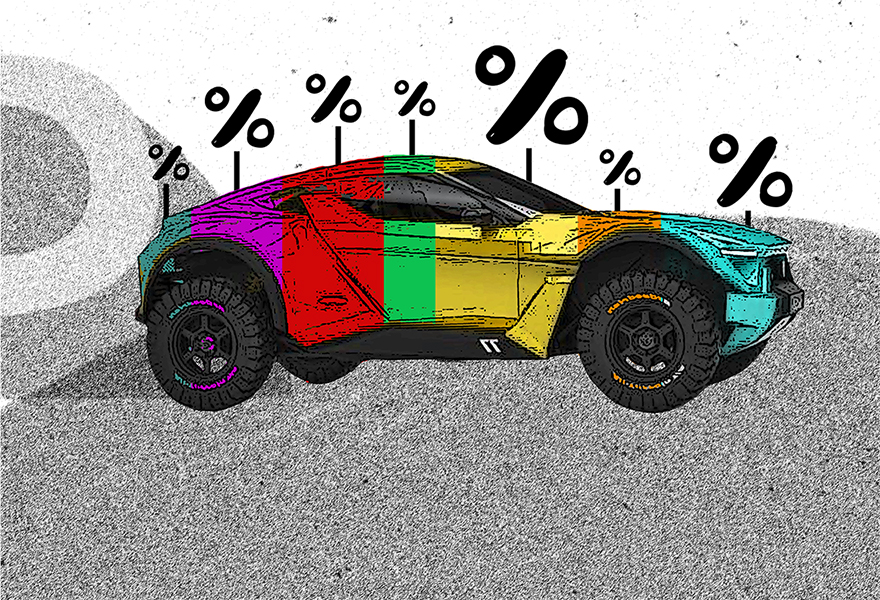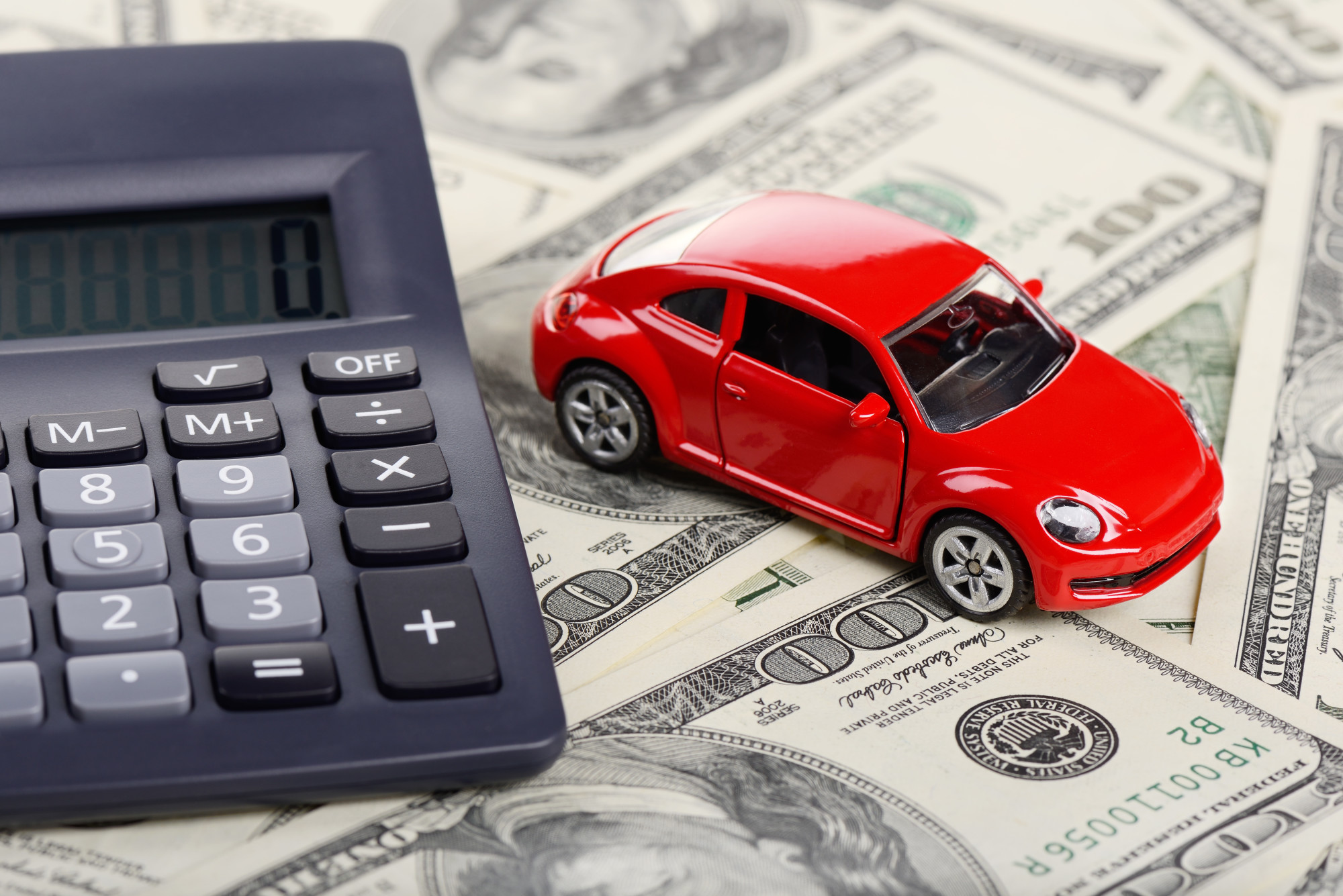Companies that lend money to car buyers make money by imposing an auto finance charge and other fees and interest as part of the loan agreement.
Whether you buy a car, house, use a credit card, or receive a cash advance on a card, you will be paying a finance charge. It’s all just part of the system.
Buying a car on credit is common because Americans have a love affair with cars. Above all, owning a car is a powerful status symbol and a means of transportation, especially in cities where public transport is limited. The U.S. auto industry sold a little over 3.4 million cars in 2020. According to Statistica, in 2020, total car and light truck sales were between 14 and 15 million in the United States.
And to finance these car purchases, more people are taking out loans and going into debt. The U.S. Public Interest Research Group (USPIRG) estimates that there were 113 million open auto loan accounts in the United States in the third quarter of 2018, up from 81.4 million in early 2010, a 39% increase. Currently, 85 percent of all new car purchases in the United States are financed, up from 75% in 2009.
Car loans come from various sources: auto dealers, car manufacturers, private loan companies, banks, and credit unions. Each has its particular appeal, special programs, and competitive rates, fees, and finance charges. In total, a car loan can have many added expenses and costs in addition to the interest rate on the loan itself. Consequently, it is crucial to understand what drives finance charges, as well as all the other elements that comprise your monthly payment amount on your car loan
Elements of a Car Loan

Car loans, like mortgages, have many elements that comprise the total monthly loan payment.
While mortgages are much more complicated because they involve much more significant amounts than car loans, they also have an established body of real estate law embedded into the loan process. Mortgages also have another distinguishing feature: cars get repossessed much easier than making a foreclosure against a property. Cars can be towed away in minutes. A house takes many months and significant legal expenses to repossess, plus the mortgage company now faces the expensive and embarrassing task of finding a new buyer.
Cars are different, and they depreciate faster. In that framework, Carfax estimates that new cars drop in value by about 20% during their first year. In about four years, cars drop in value by about 15% annually.
This means an average car will be worth only 40% of its purchase price after five years.
In this example, this value decline is dramatic:
- A 5-year-old vehicle that sold for $40,000 drops in value to $16,000 in five years.
- A 5-year-old car that sold for $30,000 drops in value to $12,000.
Carfax also makes a very valid point that depreciation is a hidden cost. Unlike other expenses associated with operating cars, such as maintenance, fuel, insurance, and repairs, depreciation is only realized when you sell the vehicle. This makes depreciation part of the cost of ownership, so it is a significant hidden expense that is not part of the loan cost.
This is why auto lending is a very different type of business than mortgages.
Elements of Auto Loans

Auto loans are a competitive business, but they pretty much all work the same.
Car loans consist of the amount borrowed, interest rate, down payment, length of the loan, and terms. These are all listed on the finance charge section of the terms sheet.
Most loan companies give you a loan based on your specific credit and risk history so that you can buy a motorized vehicle from an individual, car dealer, or used car lot. The car can be new or used. In exchange for this loan, you agree to repay the lender a fixed amount over the life of the loan.
Some lenders will finance up to 120% of the value of your new purchase, including tax and license. Likewise, most lenders want you to make a down payment of at least 20% of the purchase price, but this varies by lender and by your credit score.
Some car manufacturers also finance cars directly, and some offer rates as low as 0%. However, 0% loans almost always are on new car purchases only and require a good credit score and a down payment to be eligible for the 0% rate.
As an example, here is a car loan term chart from the firm Elements Financial that shows the auto loan costs for new and used cars over time. Note that people with lower credit scores may pay more for auto loans.
| AUTO LOAN | Interest Rate | APR | Monthly Payment | Loan Term (Months) |
| NEW & USED 2020+ | 1.99% | 1.99% | $653.71 | 48 |
| USED 2018-2019 | 2.34% | 2.34% | $659.31 | 48 |
| USED 2016-2017 | 2.49% | 2.49% | $661.29 | 48 |
| USED 2014-2015 | 2.99% | 2.99% | $667.91 | 48 |
Rates effective May 6, 2021, subject to change without notice. Each individual’s Annual Percentage Rate (APR) is determined by Elements’ underwriting criteria. Rate may vary depending on credit history, vehicle model year, and loan term. Not all applicants will qualify for the displayed lowest rate. Promotional rate includes 1.25% deduction for automated payments from an Elements checking account set up at closing. First payment due 90 days from loan funding. APR calculation and estimated monthly payment of $653.71 based on loan amount of $30,000, FICO® score of 730 or greater, term of 48 months, and the loan being a purchase or non-Elements Financial auto loan refinance. Payment shown does not include taxes or insurance premiums. Additional conditions may apply. Subject to credit approval. Offer available for auto loans closed May 6-24, 2021. FICO score less than 640 are not eligible for promotional rate or 90 days to first payment.
Auto Loan Finance Charges Explained
While auto loans are straightforward about the loan amount, interest rate, length of the loan (loan term), annual percentage rate (APR), and the total monthly payment amount, the auto loan finance charges are separate.
Auto loan finance charges are the total fees you agree to pay to borrow the money. This means the finance charge includes the interest and other fees you pay as part of the loan repayment agreement.
The most significant element in the finance charge is the APR or annual interest rate. The APR is the percentage of the loan principal you pay to your lender annually to finance the car purchase. This finance charge includes interest and any fees for arranging the loan. The most significant determinant of the finance charge is the interest rate, so the lower the rate, the lower the auto finance charge. Both the finance charge and interest rate are disclosed to you in an APR.
The Consumer Finance Protection Bureau (CFPB) suggests that the best way to compare car loans is to compare the APR. The CFPB notes that the Federal Truth in Lending Act (TILA) “requires lenders to give you specific disclosures about important terms, including the APR before you are legally obligated on the loan. Since all lenders must provide the APR, you can use the APR to compare auto loans.” The way to make valid comparisons is by using APR rates and not just interest rates. This is because the APR number contains many of the associated all-in loan costs. The CFPB also publishes a free online guide to auto loans that helps consumers.
How Car Loans Rely on Credit Scores
While comparing the APR is one way to keep your auto loan borrowing costs low, another way is to improve your credit score.
Credit scores determine your creditworthiness. In a consumer society based on credit card purchases and making large loans, businesses, including car dealers, want to feel confident they lend money to people who can repay their debts. In that framework, studies have found that people with bad credit have a higher accident risk, so they often pay more for car insurance. Bad credit even is used to determine if you can rent an apartment.
FICO scores range from 300 to 850. A minimum FICO score of 740 is typically considered good, which should allow you to get a very favorable interest rate. A person with poor credit has a score below 670. A score between 580 and 669 is considered fair, and one between 300 and 579 is poor.
As noted in the car loan chart example above, credit scores are used to determine the very important APR. This is the biggest factor determining your monthly car loan payment. In that line, having a good score is reflected in this monthly payment amount.
What Determines Your Credit Score
According to Experian, the most critical factors that determine your credit score are:
- Payment history. If you pay your bills on time, this raises your credit score. Missing a loan payment raises a red flag among the rating agencies, and that’s why this factor accounts for 35% of your score.
- Length of that history. This factor looks at the average length of time you have had available credit with an issuer. Long story in short, Rating companies like people who have a long credit history, as opposed to people who are beginning to build their credit. Having a long history accounts for 15% of your score.
- Amounts owed. Your debt obligation is based on your credit utilization ratio or the percentage of credit you use from your credit limit. This ratio affects each of your credit cards. This number accounts for 30% of your total credit score.
- Your mix of debt. The debt items include car loans, credit cards, student loans, mortgages, or other credit products and account for 10% of your score.
- New credit account applications. If you are applying for new credit cards or too many people are inquiring about your credit, it can raise a red flag to the agencies. This accounts for 10% of your score.
Keeping Auto Finance Charges in Check
Finance charges are only one part of the total car loan, but they should not be a surprise when applying for a loan. Moreover, knowing what to expect before you enter into a loan agreement is essential. Many car experts recommend searching for a car loan before buying any car, new or used. Finding a loan, including what the auto loan finance charge contains, can make your car search easier and faster.

